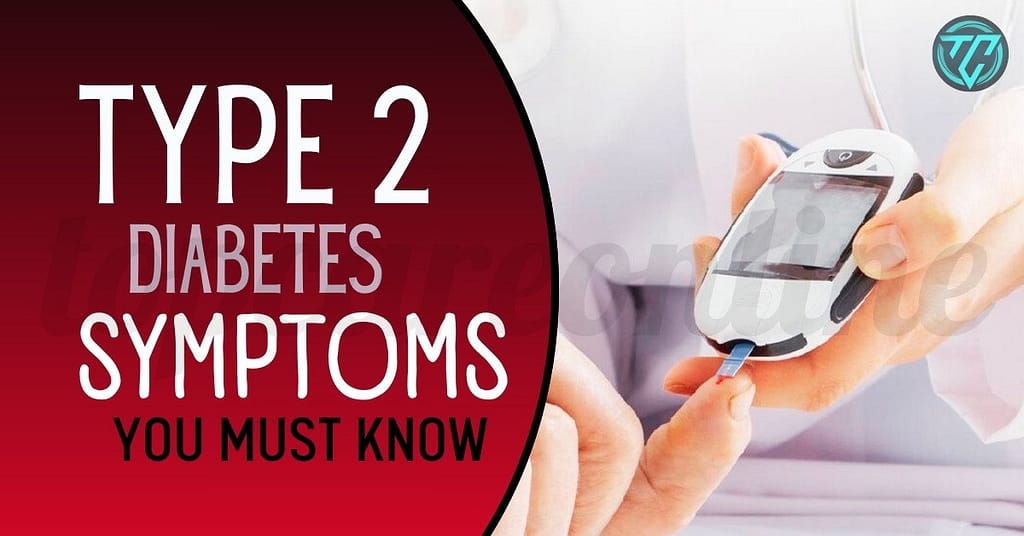Types | 7 Main Causes of Diabetes
Have you ever wondered what truly drives the onset of diabetes?
This complex disease comes in various forms, including Type 1, Type 2, Type 3, and even the lesser-known Type 4, each with its unique symptoms and challenges. Understanding the main causes of diabetes is crucial for anyone looking to protect their health or that of a loved one.
From the telltale Type 1 diabetes symptoms like increased thirst and frequent urination to the more nuanced Type 3 diabetes symptoms, which can affect cognitive function, it’s essential to recognize the signs early. Additionally, knowing how to manage Type 2 diabetes symptoms and explore effective treatment for Type 2 diabetes can empower you to take charge of your well-being.
What is Diabetes Disease
Diabetes is a chronic medical condition characterized by the body’s inability to properly regulate blood glucose levels, leading to elevated blood sugar. This regulation is primarily managed by insulin, a hormone produced by the pancreas, which facilitates the uptake of glucose into cells for energy production.
There are Several Types of Diabetes:
Type 1 Diabetes: An autoimmune condition where the immune system attacks insulin-producing cells in the pancreas, leading to little or no insulin production. This type usually develops in children or young adults.
Type 2 Diabetes: The most common form, where the body becomes resistant to insulin or doesn’t produce enough. It often develops in adults and is linked to lifestyle factors such as obesity, physical inactivity, and poor diet.
Gestational Diabetes: Gestational diabetes is a temporary form of diabetes that occurs during pregnancy. It arises when the body cannot produce enough insulin to meet the increased demands of pregnancy, leading to high blood sugar levels. While it usually resolves after childbirth, women who have had gestational diabetes are at a higher risk of developing Type 2 diabetes later in life.
Type 3 Diabetes: Sometimes referred to in relation to insulin resistance in the brain, often linked to cognitive decline and Alzheimer’s disease.
Type 4 Diabetes: A term used less frequently, it can refer to a range of conditions, including late-onset forms of diabetes that may not fit neatly into the other categories.
Symptoms of diabetes can include excessive thirst, frequent urination, fatigue, blurred vision, and slow healing of wounds. If left untreated, diabetes can lead to serious health complications, including heart disease, kidney damage, nerve damage, and eye problems. Management typically involves lifestyle changes, monitoring blood sugar levels, and medication or insulin therapy when necessary.
What is Type 1 Diabetes & What Causes Type 1 Diabetes
Type 1 diabetes, also known as juvenile diabetes, is an autoimmune condition where the immune system mistakenly attacks and destroys insulin-producing beta cells in the pancreas. This leads to little or no insulin production, necessitating lifelong insulin therapy. Type 1 diabetes is less common and generally diagnosed in children and young adults.
What is Type 2 Diabetes & What Causes Diabetes Type 2
This type is often associated with lifestyle factors such as obesity, physical inactivity, and poor diet, though genetic predispositions also play a significant role. Unlike Type 1, Type 2 diabetes typically develops in adults but is increasingly being diagnosed in younger populations.
By addressing the underlying causes of diabetes, we can better manage and potentially reduce the incidence of this debilitating disease.
7 Main Causes of Diabetes
1. Genetic Predisposition
- Genetic and Family History Factors: Understanding diabetes requires exploring genetic and family history, which are crucial in its development. Research shows diabetes has a hereditary component, with many affected individuals having a family history of the disease. The risk increases significantly if one or both parents are affected, highlighting genetic predisposition.
- Type 1 Diabetes: Primarily influenced by genetic factors, Type 1 diabetes also involves environmental triggers. Genes in the HLA complex play a key role, affecting immune function and leading to the autoimmune destruction of insulin-producing cells in the pancreas. Genetic markers elevate the risk but do not guarantee development.
- Type 2 Diabetes: Involves a mix of genetic and environmental factors. Genes affecting insulin resistance and beta-cell function are implicated. Unlike Type 1, lifestyle factors like diet, physical inactivity, and obesity compound genetic predisposition.
- Hereditary Nature: Studies highlight the hereditary aspect of diabetes. If one identical twin has Type 1 diabetes, the other twin has a 50% chance of developing it; for Type 2, the concordance rate is around 75%. Genetics are significant but not sole determinants; environmental and lifestyle factors also play crucial roles.
- Implications and Prevention: Genetic and family history insights aid in early identification and prevention strategies for at-risk individuals. Understanding these factors is key to mitigating the impact of diabetes.
2. Insulin Resistance
- Definition: Insulin resistance occurs when the body’s cells fail to respond effectively to insulin, leading to impaired glucose uptake.
- Increased Insulin Production: To compensate, the pancreas produces more insulin, which can eventually lead to beta-cell dysfunction.
- Risk Factors:
- Obesity: Excess body fat, particularly around the abdomen, is closely linked to insulin resistance.
- Sedentary Lifestyle: Lack of physical activity contributes to the development of insulin resistance.
- Poor Diet: High intake of processed foods and sugars can exacerbate insulin resistance.
- Genetics: Family history of diabetes can increase susceptibility.
- Consequences: Over time, insulin resistance can lead to elevated blood sugar levels, resulting in type 2 diabetes and related health complications.
3. Autoimmune Response (Type 1 Diabetes)
Definition: Type 1 diabetes, also known as juvenile diabetes or insulin-dependent diabetes, results from the autoimmune destruction of beta cells in the pancreas, leading to a lack of insulin production.
Autoimmune Mechanism: In individuals with a genetic predisposition, environmental triggers such as viral infections may initiate an autoimmune reaction. The immune system, which normally defends against harmful substances like bacteria and viruses, mistakenly targets and destroys the beta cells in the pancreas.
This process is mediated by immune cells and antibodies that recognize beta cells as foreign or damaged.
Genetic Factors: Specific genes, particularly those in the HLA (human leukocyte antigen) complex, play a significant role in predisposing individuals to type 1 diabetes. These genes are involved in immune regulation and can influence the likelihood of developing autoimmune conditions.
Environmental Triggers: While genetics predispose individuals to type 1 diabetes, environmental factors such as viral infections (e.g., enteroviruses), dietary factors early in life, and possibly certain toxins or chemicals may trigger or accelerate the autoimmune process.
Insulin Deficiency: As beta cells are destroyed, the pancreas produces little to no insulin. Insulin is crucial for regulating blood sugar levels by facilitating the uptake of glucose into cells for energy. Without sufficient insulin, glucose builds up in the bloodstream, leading to high blood sugar levels (hyperglycemia).
Symptoms: Symptoms of type 1 diabetes typically develop rapidly and include excessive thirst, frequent urination, extreme hunger, weight loss, fatigue, and blurred vision. These symptoms arise as the body tries to compensate for the lack of insulin and the inability to use glucose for energy.
4. Lifestyle Factors
Lifestyle factors play a significant role in the development and management of diabetes, particularly type 2 diabetes. Here’s an exploration of how lifestyle influences this chronic condition:
Dietary Choices:
- High Sugar and Refined Carbohydrates: Diets high in sugar and refined carbohydrates (such as white bread, pasta, and pastries) can rapidly increase blood glucose levels, contributing to insulin resistance and type 2 diabetes.
- Unhealthy Fats: Consumption of saturated and trans fats found in fried foods, processed snacks, and fatty cuts of meat can worsen insulin resistance and increase the risk of cardiovascular complications associated with diabetes.
Physical Activity:
- Importance of Exercise: Regular physical activity helps the body utilize glucose for energy, improving insulin sensitivity and lowering blood sugar levels.
- Types of Exercise: Both aerobic exercises (like brisk walking, swimming, or cycling) and resistance training (weight lifting or resistance bands) are beneficial for managing diabetes and maintaining overall health.
Body Weight:
- Obesity and Diabetes Risk: Excess body weight, especially abdominal fat, increases the risk of insulin resistance and type 2 diabetes.
- Weight Management: Achieving and maintaining a healthy weight through a combination of diet and exercise is crucial for reducing diabetes risk and improving blood sugar control in those already diagnosed.
Smoking and Alcohol Consumption:
- Smoking: Smoking increases the risk of developing type 2 diabetes and complicates diabetes management by impairing insulin action and increasing cardiovascular risks.
- Alcohol: Excessive alcohol consumption can lead to weight gain and increase blood pressure and triglyceride levels, complicating diabetes management. Moderation is key, and individuals with diabetes should consult healthcare providers for personalized advice.
Stress Management:
- Impact of Stress: Chronic stress can elevate blood glucose levels through hormonal responses (such as increased cortisol production), exacerbating diabetes symptoms.
- Stress Reduction Techniques: Techniques such as mindfulness meditation, deep breathing exercises, yoga, and regular relaxation can help manage stress and improve overall well-being in individuals with diabetes.
Sleep Quality:
- Importance of Sleep: Poor sleep patterns or inadequate sleep can affect hormone levels, including insulin, and contribute to insulin resistance.
- Sleep Hygiene: Establishing a regular sleep schedule, creating a comfortable sleep environment, and practicing good sleep hygiene habits can improve sleep quality and support diabetes management.
5. Gestational Factors
Gestational diabetes mellitus (GDM) is a form of diabetes that develops during pregnancy. Here’s an exploration of the gestational factors related to diabetes:
Definition: Gestational diabetes occurs when the body cannot produce enough insulin to meet the increased needs during pregnancy, leading to elevated blood sugar levels.
Risk Factors:
- Obesity or Overweight: Women with a higher body mass index (BMI) before pregnancy are at increased risk of developing gestational diabetes.
- Age: Women over the age of 25, particularly those over 35, are at higher risk.
- Family History: A history of diabetes in close family members (parents or siblings) increases the risk.
- Previous Gestational Diabetes: Women who had gestational diabetes in a previous pregnancy are more likely to develop it again.
- Ethnicity: Certain ethnic groups, including African American, Hispanic, Native American, South Asian, and Pacific Islander, have higher rates of gestational diabetes.
Hormonal Changes: During pregnancy, the placenta produces hormones that help the baby develop but can also interfere with insulin function in the mother’s body. This hormonal imbalance can lead to insulin resistance, where the body’s cells become less responsive to insulin.
Impact on Mother and Baby:
- Maternal Health: Gestational diabetes increases the mother’s risk of developing type 2 diabetes later in life. It can also lead to high blood pressure (preeclampsia), cesarean delivery, and an increased risk of cardiovascular disease.
- Fetal Health: High blood sugar levels in the mother can cross the placenta and cause the baby’s pancreas to produce excess insulin. This can lead to macrosomia (large birth weight), which increases the risk of birth complications, such as shoulder dystocia (difficulty during delivery).
- Long-Term Health Risks: Babies born to mothers with gestational diabetes may be at higher risk of developing obesity and type 2 diabetes later in life.
6. Environmental Factors
Pollution and Environmental Toxins:
- Air Pollution: Exposure to pollutants such as particulate matter (PM2.5), nitrogen dioxide (NO2), and ozone (O3) has been linked to an increased risk of type 2 diabetes.
- Chemical Exposures: Certain environmental chemicals, such as persistent organic pollutants (POPs) found in pesticides, plastics, and industrial products, may disrupt metabolic processes and increase diabetes risk.
Stress:
- Chronic Stress: Stress triggers hormonal changes that can raise blood glucose levels and contribute to insulin resistance, increasing the risk of type 2 diabetes.
Sleep Quality:
- Sleep Disorders: Poor sleep quality or inadequate sleep duration can affect hormone levels (including insulin) and increase the risk of type 2 diabetes.
Urbanization and Socioeconomic Factors:
- Urban Lifestyle: Urban environments often promote sedentary lifestyles and unhealthy eating habits, contributing to higher rates of obesity and diabetes.
- Socioeconomic Status: Lower socioeconomic status is associated with limited access to healthy foods, healthcare services, and opportunities for physical activity, increasing diabetes risk.
Climate and Geography:
- Geographical Variations: Diabetes prevalence varies across regions, influenced by factors such as climate, lifestyle, and dietary habits specific to each area.
7. Other Medical Conditions and Medications
- Medical Conditions: Conditions like hypertension, polycystic ovary syndrome (PCOS), and metabolic syndrome are closely linked to an increased risk of diabetes due to their roles in exacerbating insulin resistance.
- Hypertension: High blood pressure and diabetes have a bidirectional relationship. Elevated blood pressure can damage blood vessels, impairing insulin function and contributing to diabetes development.
- Polycystic Ovary Syndrome (PCOS): PCOS increases the risk of type 2 diabetes due to insulin resistance and elevated insulin levels commonly seen in affected women. Lifestyle changes such as diet and exercise can help manage this risk.
- Metabolic Syndrome: Characterized by high blood pressure, elevated blood sugar levels, excess abdominal fat, and abnormal cholesterol levels, metabolic syndrome significantly raises the likelihood of developing diabetes and other cardiovascular complications.
- Medications: Certain medications, such as steroids used for inflammation and antipsychotic medications (particularly second-generation ones), can increase blood sugar levels by promoting insulin resistance and weight gain.
Understanding these factors beyond lifestyle and genetics is crucial for effectively managing and preventing diabetes, as they highlight the complex interplay of medical conditions, medications, and metabolic disturbances in diabetes development.
What are 10 warning signs of diabetes
Discover the 10 key warning signs of diabetes that everyone should know! Early detection can help prevent serious complications. Click to learn more and protect your health now. 🌿
Read More:
Managing these conditions and medications effectively is crucial in mitigating the risk of diabetes.










